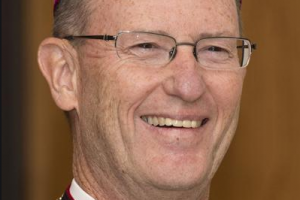Fifteen years ago, in 1999, Pope St. John Paul II declared that the Feast of Our Lady of Guadalupe would be celebrated in every Church in the Americas, because, he said, she is the Patroness, the Evangelizer, and the Mother of the Americas.
John Paul said that through her intercession, the new evangelization in America would “yield a splendid flowering of Christian life.” She is, therefore, the Star of the New Evangelization.
The Blessed Virgin Mary is an evangelist in all times, in all cultures. She was essential to the evangelization of the Americas from the time of the first Christian missionaries who came to these shores. John Paul II said that “the Most Blessed Virgin is linked in a special way to the birth of the Church in the history … of the peoples of America; through Mary they came to encounter the Lord.”
Today, we are called to the work of a new evangelization—we are called to invite the world into deeper communion with Christ and His Church. We are called to propose Christ, as if for the very first time, to a culture that has largely lost sight of the Christian sensibilities in which it is rooted. We are called to propose to people an encounter with Christ.
If we wish to be successful evangelists—successful missionaries to a people who need Christ—we need the Blessed Virgin Mary. And in our culture, in our nation, in our communities, and in our families, we need the Virgin of Guadalupe.
As we undertake the work of the new evangelization, we are called to imitate the love of Our Lady of Guadalupe. There are, in particular, three elements of the apparition of Our Lady of Guadalupe at the heart of her prophetic witness to the modern world: respect for the poor, commitment to the dignity of life, and evangelization through the power of beauty.
When the Blessed Mother appeared on Tepeyac, she appeared to St. Juan Diego, the Nahuatl Indian who was among the first to be baptized by Franciscan missionaries in Mexico in the early 16th century. She did not appear to the missionaries themselves, or to Bishop Zummarraga, or to the Indian and Spanish nobility in Mexico. Instead, the Blessed Virgin Mary entrusted the responsibility of proclaiming her presence to a simple man with no contacts, connections, or influence. She did so because she saw his dignity, his holiness, and his ability.
The Church calls us to “preferential respect for the poor.” Above all else, this means respecting the dignity, the capacity, and the call to holiness of the poor—and inviting those experiencing all kinds of poverty to share in the Church’s mission to the world.
When we invite the poor to share in the life and mission of the Church, we witness to the invitation Christ extends to each of us—poor and unworthy ourselves—to share in his mission and in his life.
When she appeared to St. Juan Diego, Our Lady of Guadalupe wore a knotted black sash around her waist—a symbol of pregnancy in Nahuatl culture. And her waist bulged—a sign of the unborn Jesus Christ growing within her. Our Lady of Guadalupe is unique among the apparitions of the Blessed Virgin Mary because she appears bearing Jesus Christ in her womb.
Our Lady of Guadalupe evangelized the Americas while witnessing to the humanity of an unborn child. If we wish to imitate her, we must be steadfast in doing the same.
For more than 40 years, the Church in the United States has been a steadfast witness for life—for truth—manifested by dedicated men and women: children, parents, priests, seminarians, and sisters, in prayer outside of abortion clinics across this country. That witness—unshaken by defeats, undiscouraged by the passage of time, undaunted by isolation, ridicule and persecution—will bear fruit. It will continue to save lives. It will continue to change hearts. In the mystery of God’s Providence, Our Lady of Guadalupe is a witness to the dignity of human life. We must be witnesses also.
If you have ever been to the Basilica of Our Lady of Guadalupe in Mexico City, you know that the image of Our Lady is shockingly beautiful. On the real tilma on which Our Lady imprinted herself, her eyes are alive, her clothing is splendid, each color is striking and vivid. And every single thing on the tilma of Juan Diego is a rich theological symbol. There is no pattern, no line, no color, left to chance. The image is saturated with meaning—so rich, so dense, so bursting with meaning that even today, it is still being ever more clearly understood.
Our Lady of Guadalupe is a witness to the power of beauty. We celebrate liturgy beautifully, and build beautiful Churches, and make beautiful music, and art, and poetry, in order to capture the hearts and imaginations of the world, as Our Lady captured the heart and imagination of St. Juan Diego. Pope Francis says, “the Church evangelizes, and is evangelized, through beauty.” Our Lady reminds us of that.
For almost 500 years, Our Lady of Guadalupe has captured hearts for Jesus Christ. She is the Star of the New Evangelization. In our commitment to the poor, to the defense of life, and to evangelization through beauty, may we imitate her, and may she intercede for us before Christ, her son.
Our Lady of Guadalupe, Star of the New Evangelization, pray for us.
—————————
Bishop James Conley is the bishop of the Diocese of Lincoln, Nebraska. This article was first published this column on the Feast of Our Lady of Guadalupe, 2014, in his diocesan paper.



You must be logged in to post a comment.